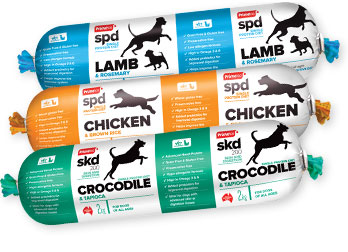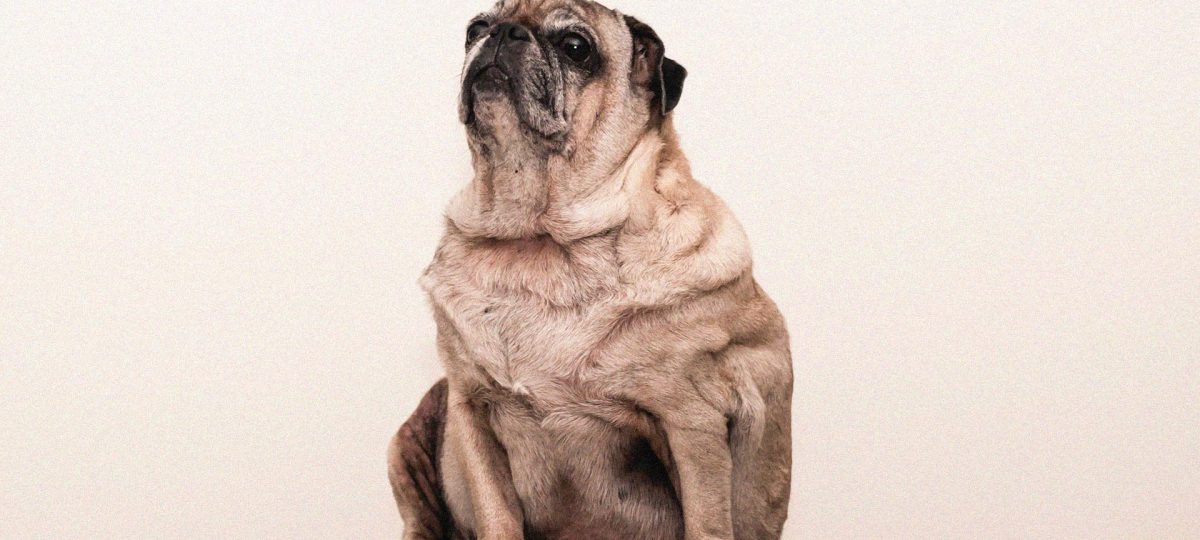Our pets are getting larger and larger and not always in a good way!
Life is good for cats and dogs these days. Top quality food on tap and stress free lifestyles can add up to packing on a few extra pounds. We all like to spoil our pets and this more often than not involves food of some description. So how do we manage our pets’ weight effectively thus avoiding all those weight related health issues?
There are a few basic traps most of us fall into. Firstly, we tend to forget how much smaller most cats and dogs are than ourselves. This tends to make our judgement on portion size a little off. Try to remember your cat or small dog has a stomach approximately the size of an egg, yes it will stretch substantially, but to fill it does not require a lot of food. Secondly we get fooled by dehydrated food i.e. biscuits. The water content of biscuits is only around 10% at most whereas wet foods can be up to 75% water. Why does this matter? Well weight for weight it takes far less dry food to satisfy an animal’s dietary requirements than wet or fresh food but we still tend to feed both food types in equal amounts. In reality we should be feeding very small amounts of dry food if any at all. We now tend to recommend wet foods over dry for this an many other reasons but that’s a whole topic in itself.
So, I hear you ask, what on Earth do I feed my pet? Dogs, and to a lesser extent cats, have co-existed with humans for at least ten thousand years. Over this time they have to a large extent eaten our leftovers. There is increasing evidence they have evolved a very similar gut metabolism to us humans which is why we see so many diet related issues common to humans and pets. There is a movement to feed cats and dogs raw unprocessed diets containing a lot of meat and bone. This in theory mimics the diet of wild dogs and cats which is seen as more natural. The big problem is, as mentioned, above, our pets have been domesticated for so long many of them are unable to cope with such diets anymore. It’s akin to us modern humans eating a caveman diet, yes Paleo diets are closer to our ancestors’ diet but lets face it our ability to digest large amounts of raw whole foods is not great anymore.
Our advice is, as with humans, feed as higher quality mixed diet as possible. It is crucial to challenge your pet’s digestive system with many different food types from an early age. In terms of protein any lean meat is ideal. Dogs can have issues with pork particularly if it is fatty and fat in general is not well tolerated by both cats and dogs. The statistics say the meat proteins most likely to be involved in gut issues in animals are chicken and beef. We can only speculate this is the case as these are the two most commonly used meats in pet foods. Cats are obligate carnivores and as such can live perfectly well on a meat only diet. That’s not to say they cannot eat other foods. Many cats love cheese for example but we always advise to only feed small amounts of dairy at a time. Dogs are more omnivorous that is they can tolerate both plant and animal matter equally well. A healthy dog diet is really not far off a healthy human diet that is high quality protein, plenty of fibre, low in fat and not excessive in carbohydrates.
Dog and cat biscuits can fulfill all of above in terms of nutritional requirements but, as with humans, such a highly processed food can over time lead to gut issues. Let’s face it, such a homogeneous food fed day after day is far from natural. In addition to this they tend to be higher in carbohydrates than quality wet foods which is an issue particularly with cats. As mentioned above the gut needs a good variety of food types, consistencies and digestibilities to remain as healthy as possible. In recent years many high quality commercially available wet or fresh diets have become available for those who would rather not prepare pet food from scratch. Prime 100 is a great example of this. A small amount of dry food is fine but keep it to a minimum.
So, as with us humans there is no perfect diet. It’s very much a horses for courses situation for cats and dogs but if you follow the basic principles discussed above, and keep portion size down, you are on the right track. As always if you have any questions we are here to help!


